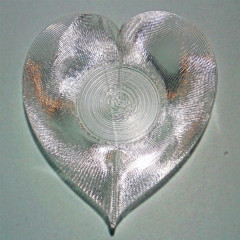Kanada, Y., SWoPP '94 (SIG Note of Artificial Intelligence, Information Processing Society of Japan), 94-AI-95-4, pp. 29-38, 1994, Published by IPSJ.
[ 日本語のページ ]
[ Paper PDF file (in Japanese) ] [ Paper postscript file (in Japanese) ]
[ OHP postscript file: Slides, Handout ] [ OHP PDF ファイル: Slides, Handout ]
[ Several constraint satisfaction problem demos in Java (You can change catalysts, rules, and frustration.) ]
Abstract:
CCM (Chemical Casting Model)
is a model of nondeterministic, or random,
computation. CCM is developed toward establishing a problem solving
methodology based on emergent computation, which is open to continually varying
environment. Computation in CCM is based on local information. However, a
solution cannot be found if the locality is at the limit. Thus, the locality of
computation, especially computation of the evaluation functions, must be
controlled properly, and the locality in the search space must be controlled
properly not to fall into local optima. Four methods of controlling locality
are shown in this report. They are addition or removal of catalysts,
composition of reaction rules (or tunneling), simulated annealing (SA) and
frustration accumulation method (FAM). We found that catalysts and FAM are
effective in constraint satisfaction, but that the performance is worse than
conventional methods when only using these methods in a case. We also found
that tunneling, or dynamical composition of reaction rules, is effective in
optimization.
Introduction to this research theme:
CCM: Chemical-Computation Model
Keywords: CCM, Emergent computation, Randomized computation, Randomized problem solving, Rule-based computation, Rule-based problem solving, Local information, Localized computation, Local evaluation function, Production system, Production rule, Local information, Localized computation, Local evaluation function, Graph coloring
 Abstract: 3D printing technology usually aims reproducing objects deterministically designed by 3D CAD tools. However, 3D printing can generate patterns similar to randomized (non-deterministic) 1D or 2D cellular automata (CA). Cheap fused deposition modeling (FDM) 3D printers can be used for this purpose. By using an FDM 3D printer, melted plastic filament is extruded by a hot nozzle to shape a 3D object. They can generate CA-like patterns with constant head motion and constant filament extrusion and with unintended fluctuation but no explicit randomness. Because of fluctuation, every time the printer generates a different emergent pattern. This paper proposes a method for printing seaweed-like patterns of 1D and 2D CA using FDM, and computational CA models. This method will open a new horizon of 3D printing applications.
Abstract: 3D printing technology usually aims reproducing objects deterministically designed by 3D CAD tools. However, 3D printing can generate patterns similar to randomized (non-deterministic) 1D or 2D cellular automata (CA). Cheap fused deposition modeling (FDM) 3D printers can be used for this purpose. By using an FDM 3D printer, melted plastic filament is extruded by a hot nozzle to shape a 3D object. They can generate CA-like patterns with constant head motion and constant filament extrusion and with unintended fluctuation but no explicit randomness. Because of fluctuation, every time the printer generates a different emergent pattern. This paper proposes a method for printing seaweed-like patterns of 1D and 2D CA using FDM, and computational CA models. This method will open a new horizon of 3D printing applications.
